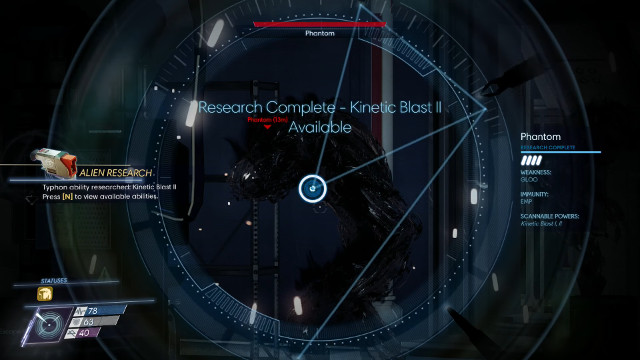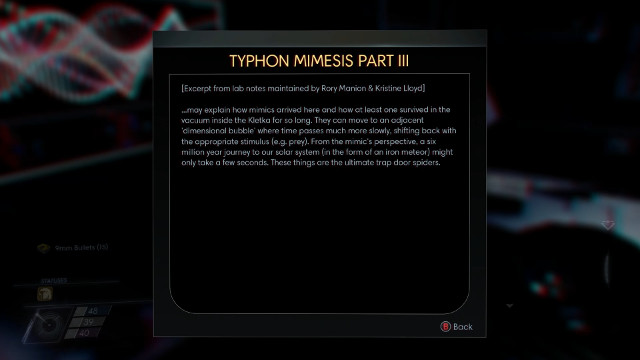Prey has been a largely unknown commodity up until this point. A few trailers and one demonstration aside, the highlights of what we know about Arkane Studios' upcoming sci-fi title can be boiled down to the ability to turn into inanimate objects, which, while hilarious, isn't going to get $60 out of my pocket by itself.
But Prey lifted the veil today, allowing long gameplay playthroughs across the internet, along with the announcement of a console demo available to the public on April 27, an impossibly lengthy two weeks away, and I must say I'm extremely impressed. While we won't know for sure how good Prey is until its early-May release date, a few aspects seen in this new gameplay have me giddy with anticipation.
Story Documents
I love this aspect in almost every game its in: rather than spoonfeed you all the details of a game's plot, Prey has scattered story documents around for you to find. These may help you with an immediate task, or they may just help you better understand the world in which you're operating.
This isn't new, of course. This practice is found in games from Dishonored 2 to Silent Hill 2 and even further back, with more extreme examples like the Dark Souls games which hide most of the lore details behind hidden collectibles.
So, lots of good games do this, but the key is that very few bad games do. This feature aids exploration and adds depth that would otherwise be unattainable through sheer cutscenes.
Resource-Based Progression

I haven't always loathed pure experience-based progressions systems. Oddly enough, it was Ghost Recon Wildlands that made me see the light. As I praised in my review, Wildlands requires people to acquire specific resources to get upgrades, and each upgrade required a unique resource. Suddenly, the idea that I just get experience for whatever action I do, which will give me an upgrade point upon leveling up, and I can use that point however I choose, seemed outdated.
Prey, it seems, uses a combination of resources you find throughout the game and a level of Alien research that requires you to scan enemies. Once you do that, you can unlock new abilities, assuming you have enough of those resources.
The key here again is encouraging exploration. I have to wander around this alien-infested base and find items that help me upgrade, and I can't just blow through every alien I meet because I need it to be alive in order to scan it and research it. I'm down.
There is certainly more, too. There's the apparent depth in Alien design that makes them strong or weak against certain types of weapons. There's the intuitive environments that let you traverse and climb objects in a way that feels logical and natura. All in all, these are the little things, but a solid execution of the smaller details that can separate a great game from a good one and a good one from a mediocre one and a mediocre one from a bad one. Only 14 days until we can all get our hands on Prey for the first time.







